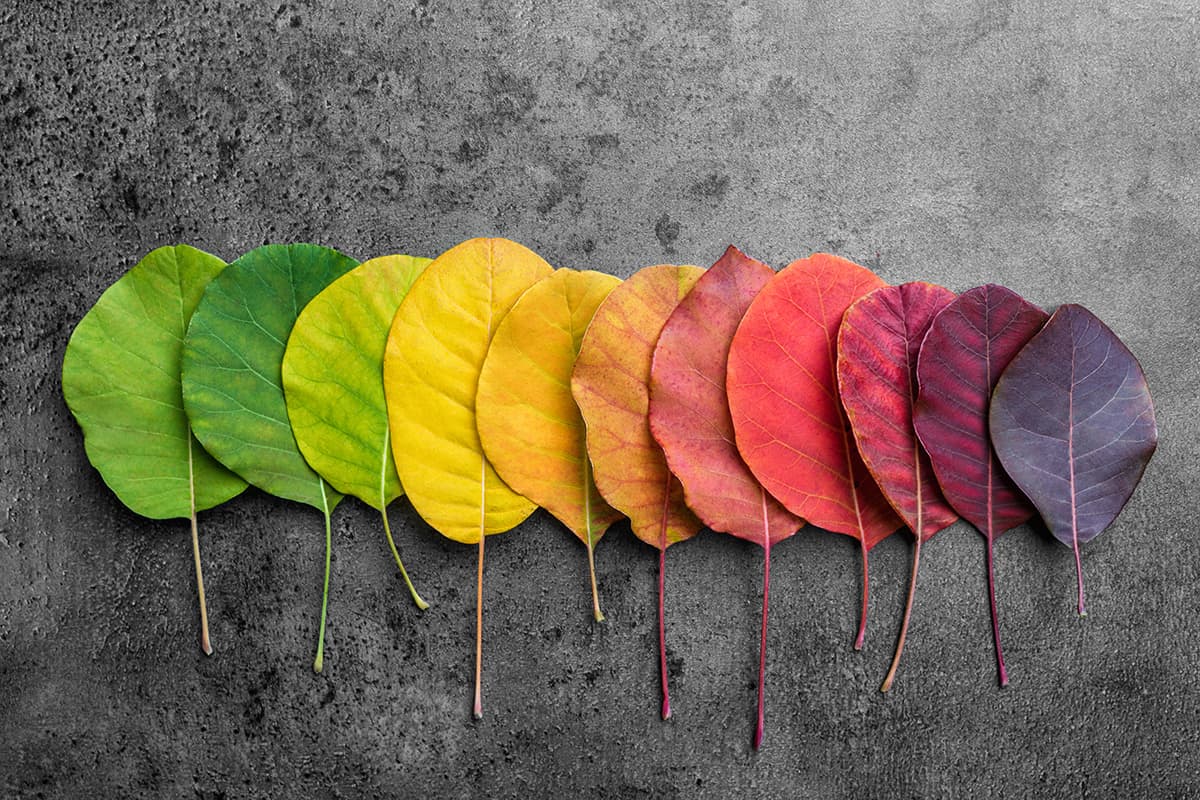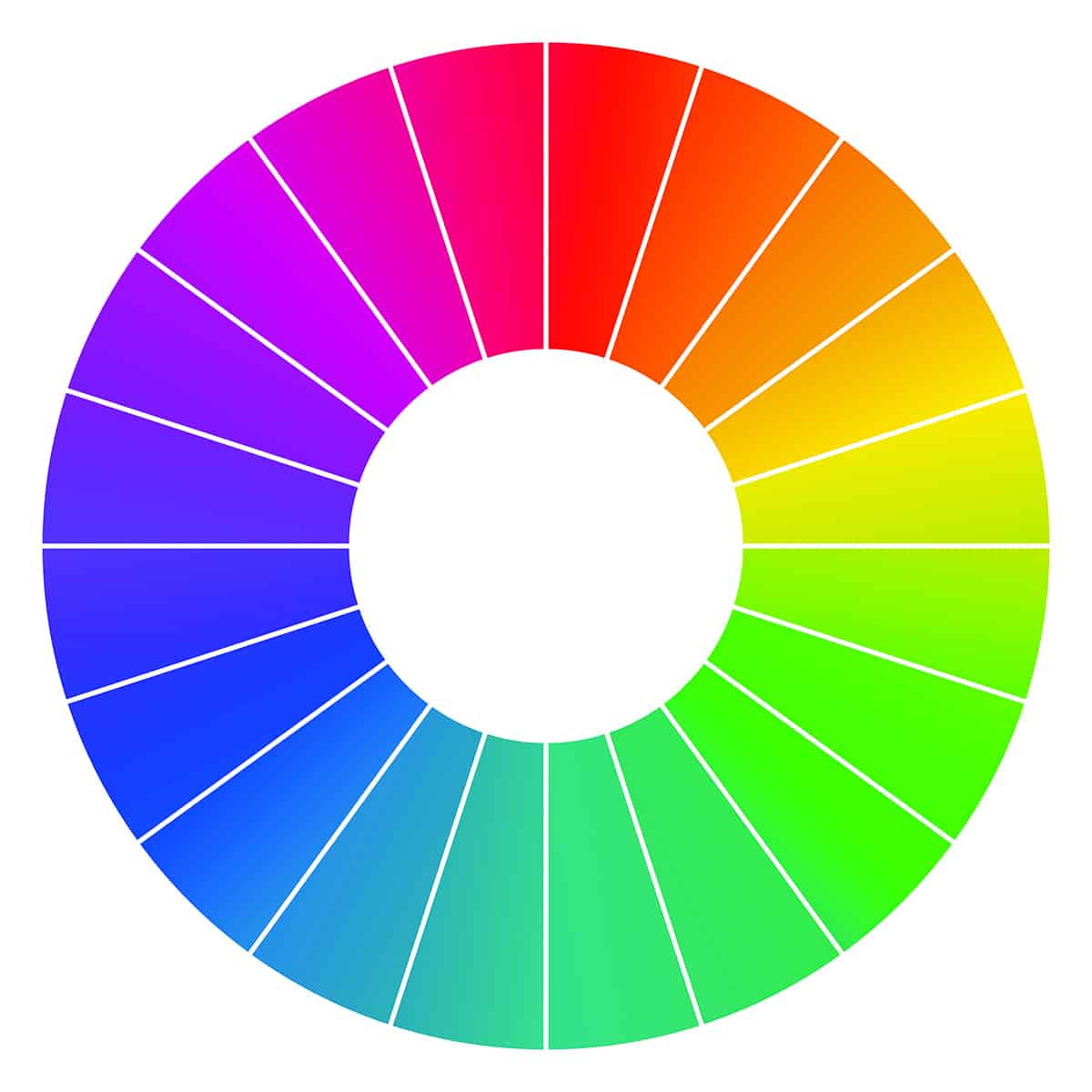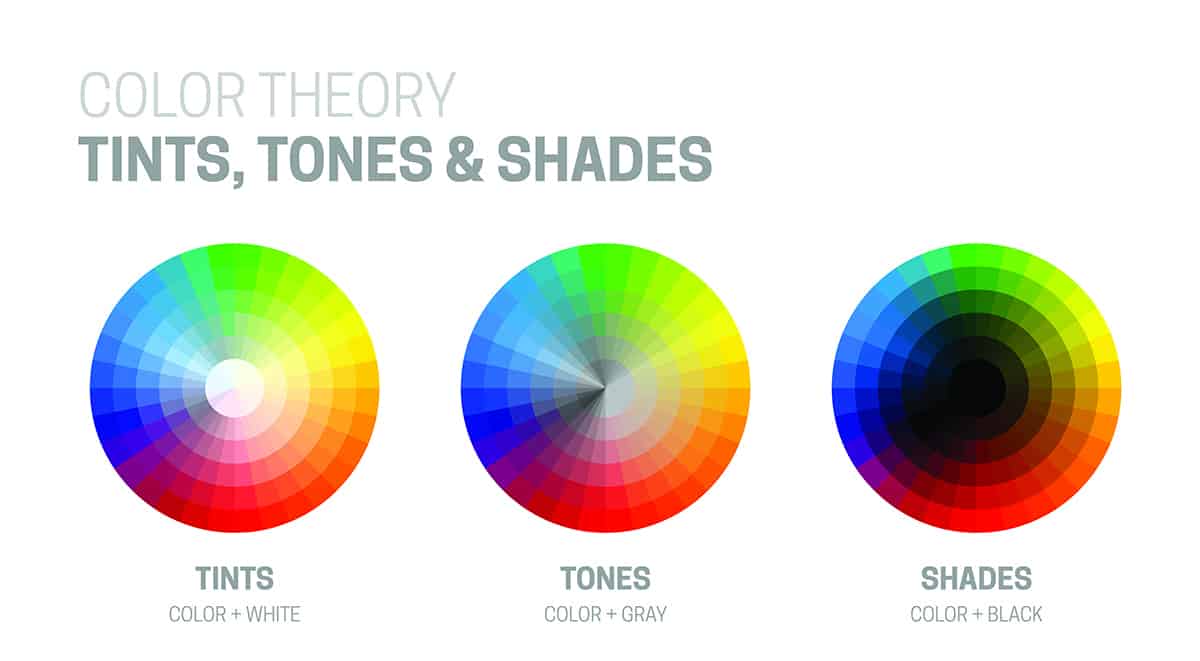Anyone interested in home decor or interior design will have come across the term ‘hue’. This is a word that is used in reference to colors, and it’s important to understand exactly what it means to fully grasp any design or color theory texts.
Fortunately, hue is not a complex term; in fact, this word simply means ‘color.’ Here we expand on the term ‘hue’ and take a closer look at how it is used to describe home decor, along with other words you have likely stumbled upon in relation to hue.
What Does ‘Hue’ Mean?
The word ‘hue’ can be understood as another term for ‘color’. These two words can be used interchangeably in many instances, although there is a subtle difference. Hue refers to the color family that a color belongs to. For example, you could say that a navy sofa has a blue hue.
For colors where the dominant color is not obvious, for example, in a reddish-purple-colored paint, you might say that the purple paint has obvious red hues coming through.
In these examples, the word ‘hue’ could easily be swapped out for the word ‘color’, and the message would still be the same. For example, it makes perfect sense to say that purple paint has a red color coming through or that a navy sofa has a blue color. The issue comes when swapping out the word color for hue because the word color refers to every element of color, including what hue, tint, shade, or tone it is.
For example, you describe a vehicle as being a dark color, whereas if you described it as being a dark hue, this wouldn’t make any sense.
Examples of Hue in Home Decor
When used in reference to home decor, hue is most commonly spoken about in regard to paint colors. This is because there is such a huge range of paint colors with very slight differences of hue, tint, shade, and tone, and being able to describe them very precisely makes it much easier to choose the color you want.
This is most helpful when looking at paint colors where the dominant color, or the color family, isn’t immediately obvious. This is typical when shopping for neutral colors such as off-white, beige, gray, and black.
Hues in neutral paints
One of the biggest mistakes people make when purchasing a neutral paint color for their home is not paying attention to the hue. If you have ever bought a tin of gray paint only to apply it to your walls and found out it looks more like lilac, then this is for you. Neutral paints are made up of a combination of colors that have been made lighter or darker with the addition of white or black. When a color is very light or very dark, it can be difficult to identify what color the black or white was mixed with.
For example, when choosing a shade of off-white, you may not be able to tell from a color swatch if the off-white has been mixed with a drop of yellow or a drop of blue. A yellow-based off-white is going to be much warmer, while a blue-based off-white will be cooler and fresher.
Knowing this can help to determine which color is going to work best in your situation. A cool off-white might be described as having a subtle blue or green hue, while a warm off-white could be described as having a slight yellow or orange hue. This technique for understanding hue in reference to neutral paint colors also works on darker colors and even mid-toned colors. Gray is a notoriously difficult paint color to get right, because, depending on the hue and the lighting, gray paint can read as lilac, blue, green, or even beige.
Hue families
Another way you might hear hue being referenced is in color families. This is simply a way of explaining which family a color belongs to. For example, if you are looking for a blue wallpaper but you don’t know what specifically you want, you might ask to look at all of the wallpapers available with a blue hue or in the blue family.
Hue, Tint, Tone, and Shade
Hue is one of four ways that the specifics of a color can be explained. While hue references the color family that a color belongs to, the words ‘tone’, ‘tint’, and ‘shade’ can be used to describe the other qualities of a color.
What is Tint?
Tint is the term used to describe a color, or a hue, which has been mixed with white to achieve a lighter, more pastel version of the original color. Hue is the pure color, for example a primary color, and the tint is the color you achieve by mixing the primary color with varying amounts of white.
The more white that is added to a color, the more soft and subtle the color becomes. When a color is predominantly made up of white and just a splash of the original hue, the resulting color will appear to be a shade of off-white, but in certain lights, or when used across a large space, the tint will usually be apparent. For example, if red is mixed with a generous amount of white, you will work through varying tints of pink, until you reach a shade of off-white that has an almost imperceptible pink tint.
What is Tone?
The tone of a color is when a hue, or original color, has been mixed with gray. The extent of the tone will depend on the proportions of gray that have been used. The more gray that is combined with the hue, the murkier or more muted the color will become.
What is Shade?
Shade is a reference to when a hue has been mixed with black. This causes the color to take on a darker quality, and the more black that is added, the darker the color will get. When the color is mostly made up of black, it will be difficult to distinguish the original color that was used, and the resulting color may simply look black.
However, by using a brighter color as a base, you can create shade colors that bring a specific atmosphere to a space. For example, black with a blue base will read as cool, while black with a brown base will have a more earthy, cozy feel.
Can Color Hue Change?
When the tint, tone, or shade of a color is changed, the hue will remain the same. This is because hue refers to true colors found in the color spectrum and therefore is not used to describe neutrals such as gray or cream. These colors, even though may not be obvious, will always belong to a color family, and that is the original hue.
For example, when the tint of yellow paint is changed by adding a significant amount of white paint, you will end up with an off-white color that contains just a drop of yellow. The hue of this paint will still be yellow because it remains part of the yellow family, despite being an exceptionally light or pale version of yellow.








